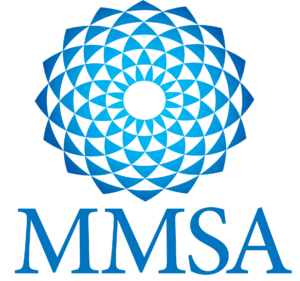Last month, our research staff had the opportunity to present our latest research on video-based professional learning communities at the national annual meeting of NARST (National Association for Research in Science Teaching) in Atlanta.
We organized and chaired the session, which brought together national leaders from Stanford, Northwestern, and TERC, along with MMSA. The session focused on the ways recent developments in video-based technologies make possible a revolution in models of professional development for STEM educators, in and out of schools.
For some decades, research has shown the value of PLC’s (professional learning communities) in advancing the knowledge and skills of teachers. These usually take the form of a group of teachers coming together in person to look at evidence of student learning drawn from their own classrooms, seen through a powerful lens such as NGSS practices. What has changed is that video technology has made it possible for the teachers to record and annotate videos of their interactions with youth, letting them watch each other’s teaching practices directly. Even more powerful is the use of live video-conferencing to bring together teachers into an online PLC that doesn’t require them to be in the same room.
MMSA’s work in this area has been funded by the Noyce Foundation, STEM Next, and more recently the AISL program of NSF. Our key innovation is applying the video-based PLC’s to educators who work in out-of-school settings such as afterschool programs. Working with our implementation partners at the University of Maine Office of Cooperative Extension (4-H), we have developed a set of short courses that allow afterschool educators to learn from each other’s videos in a safe environment with an experienced coach. The courses build skills that research has shown are important for effective STEM facilitation, such as how to ask purposeful questions, or how to help youth build an identity as someone who can contribute to STEM.
Research findings focused on the design tensions inherent in the model, and the ways these were addressed:
– One limitation of the approach was the availability of high-speed internet to support video-conferencing and real-time viewing of video clips. To address this, participating groups created work-arounds as needed. For example, they joined the discussion by phone for non-video parts, experimented with quicker upload platforms, or relocated to libraries or other high-bandwidth locations.
– Audio quality was also a fundamental challenge. With external microphones being too expensive for scalability of the model, educators were creative in optimizing audio quality in their own settings. For example, some invited a subset of youth into a separate space, while others used selfie-sticks to capture small-group work with youth.
– Length of a video clip was an ongoing tension in the program. To minimize the storage needed on participants’ recording devices, educators were asked to record “about 3 minutes” of video showing their practice of each skill. However, many educators recorded longer periods and enrolled the help of knowledgeable others in their communities to edit and upload them.
Read the full paper: Adapting Video-Based Reflections to Afterschool Settings
Overall, the session was so well received that the presenters are now exploring opportunities for submitting the papers as a set, for a special issue of a research journal such as JRST (Journal of Research on Science Teaching).
Visit the ACRES (Afterschool Coaching for Reflective Educators in STEM) website page for more details about the project.


